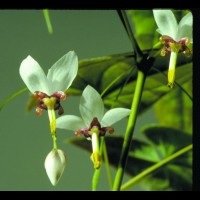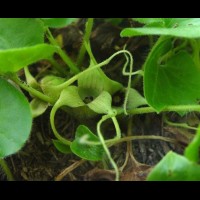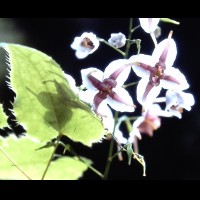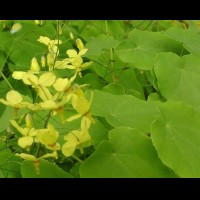Epimedium ilicifolium (Several clones/Cc. numbers)
A particularly cold-hardy, Chinese evergreen species from Shaanxi Province. Darrell found it in three areas in Nov. 2000 at the highest elevation above snowline. He trudged up steep ravines through snow and freezing temps just to see it in the wild. The long, narrow, evergreen leaflets are especially spiny (ilici-=holly, folium=leaf), on stems to 10”. Large flowers with light green inner sepals and bright yellow spurs, on stems to 18”.
A particularly cold-hardy, Chinese evergreen species from Shaanxi Province. Darrell found it in three areas in Nov. 2000 at the highest elevation above snowline. He trudged up steep ravines through snow and freezing temps just to see it in the wild. The long, narrow, evergreen leaflets are especially spiny (ilici-=holly, folium=leaf), on stems to 10”. Large flowers with light green inner sepals and bright yellow spurs, on stems to 18”.





